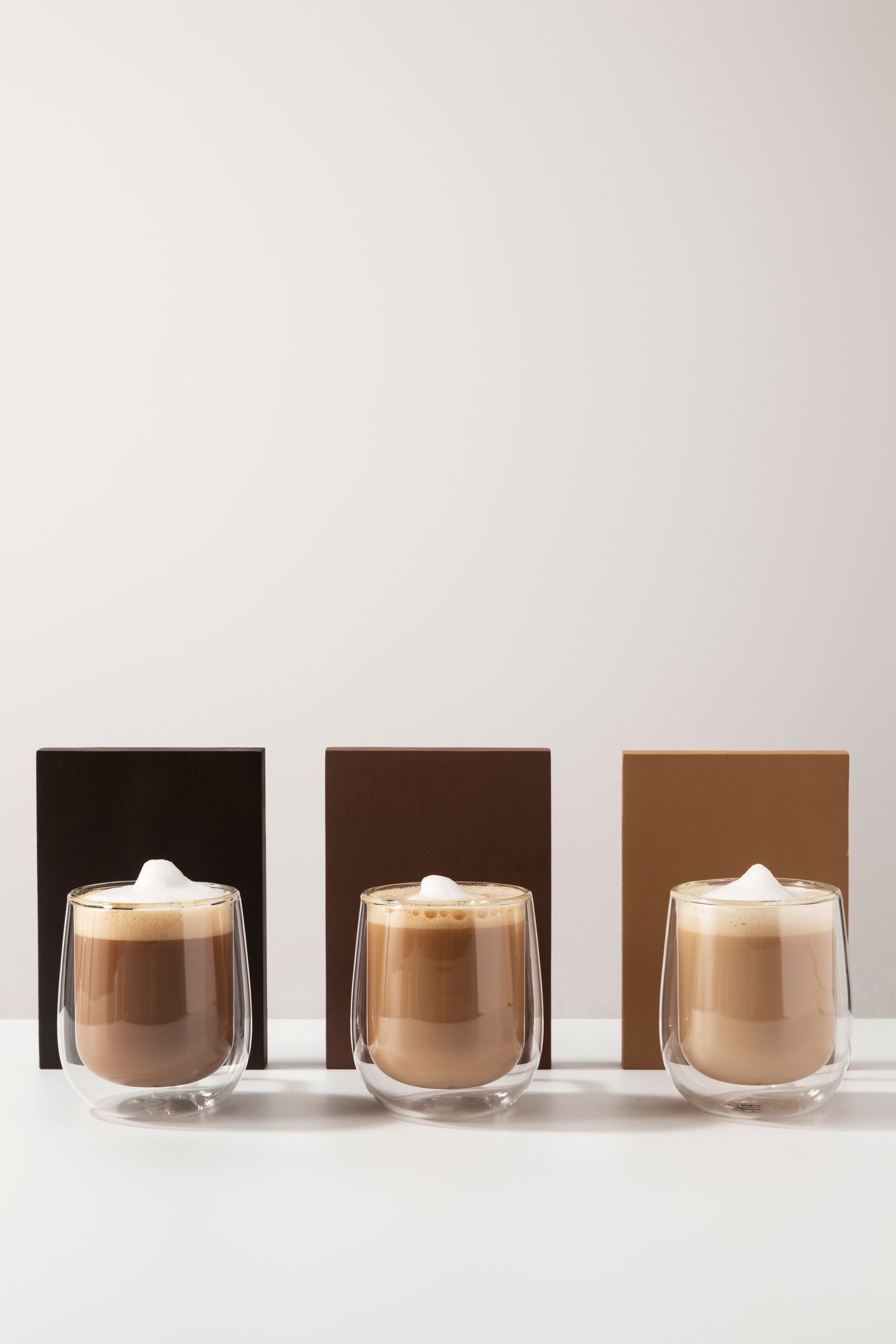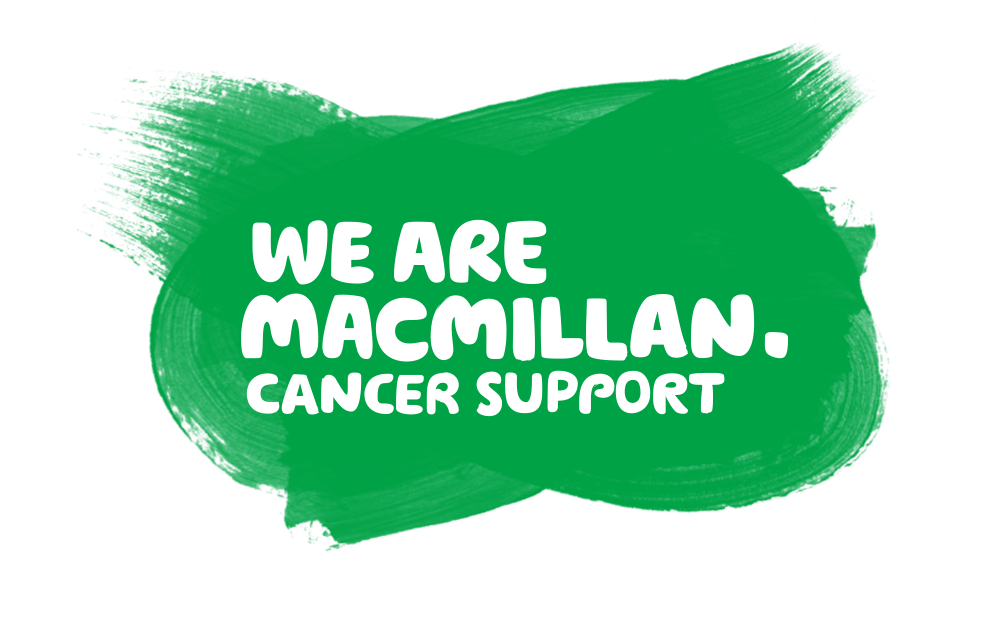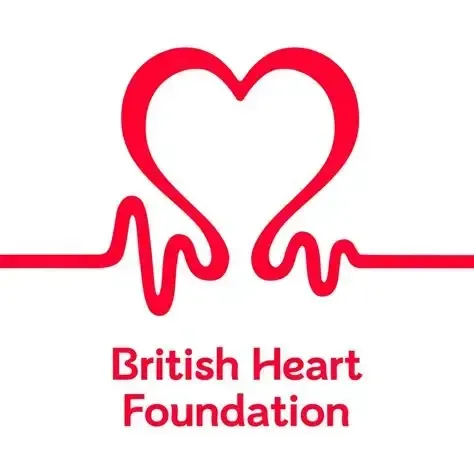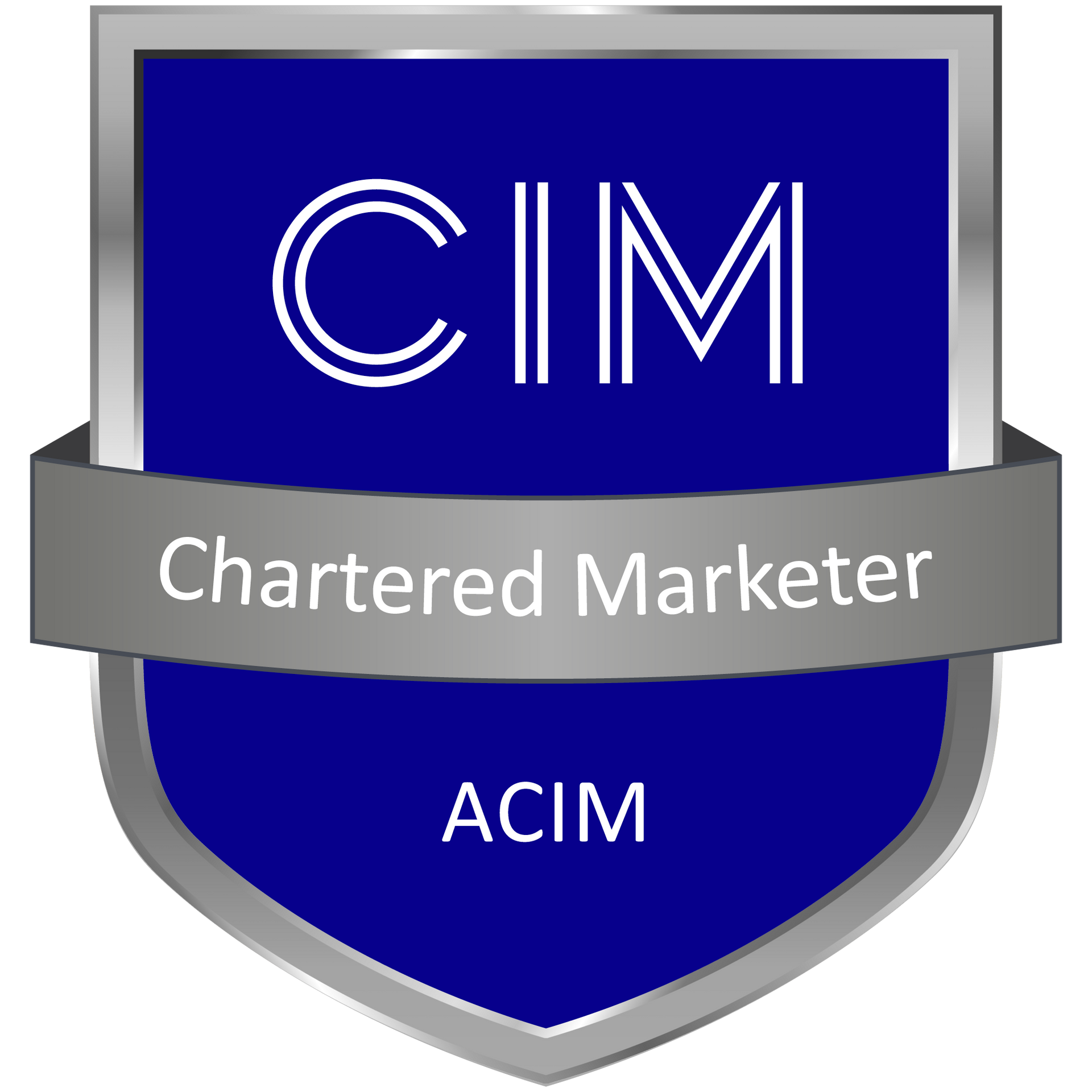Are you an emoji king or queen?
cayleigh_moore • June 1, 2021
Are you an emoji king/queen?

At work I am the one known as ‘Emoji Queen’! I pretty much use them in all the emails I send out unless I'm not happy. I have always found them to help add a bit of personality, bit of character and make an email a little less daunting. I guess when you are sending an email to someone, you are not always sure how it will be perceived but with emojis, it helps conquer that barrier and makes communication stronger. I guess that is why I like using them as I can convey a message easily without offending anyone. Even though I use emojis, I often wondered what they were designed for and with a bit of research, I came across the following:
• To Lighten Up the Mood. When talking about a severe matter or dire situation, people tend to use emoji in order not to make the feeling worse than it should.
• Communicate When Words Fail
• To Soften the Blow
• Easing up the Criticism
A quick study indicated that people who agreeable are more likely to use emojis on social media and within emails. Agreeableness is in fact a personality trait that correlates with better communication in the real world. The individuals are known to smile a little more and are much more encouraging when speaking with others.

The world of graphic design is evolving faster than ever. With AI tools now capable of generating logos, illustrations, and full brand concepts in seconds, creativity has entered a new era — one filled with opportunity, innovation, and a fair amount of confusion. At the heart of this shift lies a big question: Who owns what when AI is involved? Whether you're a designer or a client, understanding the intersection of artificial intelligence and intellectual property (IP) is essential to protecting your work and The Rise of AI in Graphic Design AI-powered platforms have become powerful creative companions. They help designers brainstorm concepts, speed up repetitive tasks, create early mock-ups, and even inspire entirely new directions. But while AI can assist, it isn’t a replacement for human creativity — nor is the legal landscape surrounding it totally settled. This is where IP becomes a crucial conversation. Who Owns AI-Generated Designs? Here’s where things get interesting (and sometimes messy): AI-generated content typically cannot be copyrighted. Copyright law generally protects works created by humans — not machines. This means that if an artwork is created 100% by AI, no exclusive rights can be guaranteed. Human involvement matters. A lot. If a designer uses AI as a tool but adds meaningful human creativity — edits, enhancements, concept direction, or original composition — the final piece may qualify for copyright protection. AI training data complicates things. Some AI models are trained on images scraped from the internet, raising ethical and legal concerns. Designers should know the origins of the tools they use and avoid infringing on existing copyrighted work. Clients should always ask for clarity. When commissioning a designer, it’s important to understand: How AI tools were used What level of human creativity was applied What rights come with the final design Transparency protects everyone. Why IP Rights Still Matter in an AI World Even with AI in the mix, IP rights remain central to professional graphic design: They protect original ideas and concepts. - They ensure clients receive legitimate, safe-to-use assets. - They uphold the value of creative work — human creative work. For freelance designers, IP awareness isn’t optional anymore. It’s part of being a responsible, trustworthy professional in a rapidly changing industry. How Designers Can Stay Protected Here are some smart steps for navigating AI and IP safely: Use reputable AI tools with clear licensing policies Always add your own creative input — never submit raw AI output as final work Keep a record of your design process Disclose AI usage to clients to build transparency and trust Understand local copyright laws (they’re evolving!) Being informed isn’t just good practice — it’s good business. Final Thoughts: Creativity Still Belongs to You AI is an incredible tool, but the magic of design still comes from the human behind the screen — your vision, your style, your decisions. Understanding IP rights ensures your creativity remains protected and respected, no matter how technology evolves. Ready to bring your brand to life — ethically and creatively? Get in touch today to collaborate on stunning, original designs made with professional expertise and complete ownership clarity. Let’s create something beautiful — and legally solid — together.

As consumer behaviour's shift, platforms update their algorithms overnight, and new technologies reshape how we communicate, the brands thriving today aren’t just innovative — they’re adaptable. And at the core of their strategy? Artificial Intelligence. AI Is No Longer a Trend — It’s the Toolkit Just a few years ago, using AI in marketing meant dipping your toes into automated email campaigns or basic chatbots. Fast forward to 2025, and AI is now the powerhouse behind: Hyper-personalised content based on real-time user behaviour Predictive analytics that shape campaigns before they even launch Creative generation — think visuals, videos, and entire ad sets built by AI Voice and conversational interfaces for customer engagement Real-time sentiment analysis to gauge how your audience feels about your brand If you're not leveraging AI tools by now, you're already behind — but the good news? It's never been more accessible. With low-code/no-code platforms and plug-and-play integrations, AI isn't just for Fortune 500s anymore. Adaptability Is Your Competitive Advantage Technology is only as useful as your ability to pivot with it. Adaptability in 2025 means: Testing fast, failing smarter : Don’t wait six months for campaign results — analyse, adjust, and relaunch in days or even hours. Cross-channel flexibility : Be where your audience moves, whether it's the next-gen social platform, AR-based shopping experience, or immersive virtual community. Team agility : Cross-functional teams that blend creativity, data, and tech skills are outpacing siloed departments. Being adaptable isn’t just about reacting to change. It’s about anticipating it and staying three steps ahead. Data Isn’t Just King — It’s the Whole Kingdom In the age of AI, data isn’t optional. It fuels smarter targeting, sharper messaging, and better business decisions. But in 2025, it's not just about collecting data — it's about ethical, privacy-first data strategies. Marketers must: Be transparent with users Focus on first-party data collection Build trust through clear, human messaging (even if AI is doing the talking) Brands that prioritise ethical data use are earning loyalty that lasts far beyond the first click. Human + AI: The Ultimate Marketing Duo AI might be the brain, but humans are still the heart of marketing. 2025’s most powerful campaigns blend AI precision with human empathy: A machine can generate 100 ad variations. A marketer knows which one hits emotionally. AI can analyse audience behavior in seconds. Humans know how to craft a story that resonates. The future isn't about replacing marketers — it’s about supercharging them . The Bottom Line In 2025, successful marketing comes down to this: Use AI to move faster, smarter, and deeper Stay adaptable to change — or risk becoming irrelevant Never lose sight of the human element Whether you're a solo entrepreneur or scaling a global brand, the rules of marketing have changed — and the playbook is being rewritten in real-time. So the question isn’t whether you’re ready for the future. It’s whether the future is ready for you. Need help integrating AI into your marketing strategy? Reach out — and let’s build something that lasts. Let me know if you want this tailored for a specific niche (e.g. e-commerce, real estate, B2B, etc.), or if you'd like to add visuals, SEO keywords, or a stronger call-to-action.

Artificial Intelligence (AI) has become a game-changer in many industries, and marketing is no exception. With its ability to analyse massive amounts of data and automate processes, AI is transforming the way businesses interact with their customers. But as with any emerging technology, there are pros and cons to its integration into marketing strategies. Let’s break it down. The Pros of AI in Marketing Enhanced Customer Insights and Personalization AI can process vast amounts of customer data to uncover patterns and preferences. This allows businesses to segment their audience more precisely and deliver personalized content, offers, and recommendations. For example, streaming platforms like Netflix use AI to analyse viewing habits and suggest shows tailored to individual tastes. Personalized marketing leads to higher engagement, conversions, and customer loyalty. Automation of Routine Tasks Marketing involves numerous repetitive tasks—responding to customer inquiries, sending emails, and updating social media accounts, just to name a few. AI tools like chatbots, automated email campaigns, and social media scheduling tools help streamline these tasks, freeing up time for marketing teams to focus on strategy and creative initiatives. Automation also reduces human error and enhances consistency in communication. Improved Targeting and Ad Optimization AI has revolutionized digital advertising by enabling better targeting and real-time optimization. Machine learning algorithms can analyse user behaviour and predict which ads will perform best with specific audiences. For example, AI can help marketers place ads where they are most likely to generate clicks and conversions, maximizing return on investment (ROI). It can even optimize ads during campaigns by adjusting messaging or targeting based on user interaction data. Better Customer Experience AI can enhance the overall customer experience by providing instant responses and personalized recommendations. Chatbots, powered by natural language processing (NLP), allow brands to engage with customers 24/7, answer questions, resolve issues, and guide users through sales funnels. The ability to offer real-time assistance improves customer satisfaction and can drive sales. Data-Driven Decisions One of the most significant advantages of AI is its ability to sift through massive amounts of data quickly and make sense of it. Marketers can leverage AI to predict customer behaviour's, track the performance of campaigns, and identify trends that might be otherwise invisible. With AI-backed analytics, decisions are more informed, reducing the risk of costly mistakes. The Cons of AI in Marketing Loss of Human Touch While AI can personalize marketing efforts, there’s a risk that it could lead to a lack of human connection. Over-reliance on AI-driven messaging and automation might alienate customers who prefer personal interactions. Many consumers value authentic, human engagement, and if AI overpowers that aspect of marketing, it may cause brands to lose their genuine appeal. Data Privacy Concerns AI-driven marketing relies heavily on consumer data to deliver targeted content and ads. While this improves personalization, it also raises concerns about privacy and data security. With strict data protection laws like GDPR in place, marketers need to be extra cautious about how they collect, store, and use consumer data. Any breach or misuse of personal information could damage a brand’s reputation and lead to legal consequences. High Implementation Costs Developing and integrating AI into marketing systems can be expensive. Small businesses, in particular, may find it challenging to afford advanced AI tools and hire the necessary talent to manage them. Although AI can ultimately increase efficiency, the upfront investment may be a barrier for some companies. Bias in Algorithms AI systems are only as good as the data they are trained on. If the data contains inherent biases, AI can unintentionally perpetuate those biases, leading to skewed marketing efforts. For example, an AI algorithm designed to target ads for job postings may inadvertently exclude certain demographic groups if it’s trained on biased data. Marketers need to carefully monitor and address any bias to ensure fairness and inclusivity in their campaigns. Dependency on Technology Over-reliance on AI in marketing can create challenges if the technology fails or is disrupted. If marketers don’t have a solid backup plan or the expertise to handle manual interventions, they may struggle to adapt when technology encounters issues. Additionally, AI is not perfect and may make mistakes, which can have a negative impact on the customer experience or lead to misguided campaigns. Conclusion: A Balancing Act AI in marketing offers undeniable benefits, particularly in terms of efficiency, personalization, and data-driven insights. However, there are challenges that come with its implementation, including ethical concerns, privacy risks, and the potential loss of the human element that makes marketing truly effective. To harness the power of AI while mitigating its drawbacks, marketers should strike a balance. AI should be used as a tool to complement human creativity and strategy, rather than replace it entirely. By combining AI’s capabilities with human insight, businesses can create marketing campaigns that are not only efficient and data-driven but also emotionally resonant and customer-focused. In the end, whether AI in marketing is a pro or con depends largely on how it is used. Embracing AI responsibly and ethically can unlock tremendous potential, but over-reliance or careless implementation could backfire. It’s up to marketers to navigate this exciting technological frontier with caution, creativity, and a clear focus on the customer experience.

The marketing landscape in 2025 is poised for exciting transformations, but it also faces significant challenges. As technology advances and consumer behaviour continues to evolve, businesses must adapt quickly to stay relevant and competitive. Expectations for Marketing in 2025 AI-Driven Personalisation In 2025, personalised experiences will dominate marketing strategies. Thanks to artificial intelligence (AI), marketers can deliver hyper-targeted content and advertisements to individual consumers in real-time. AI tools will analyse vast amounts of consumer data to predict preferences and behaviours, allowing brands to tailor their messaging with precision. From personalized product recommendations to dynamic ad content, AI is making it easier than ever for brands to forge deeper connections with their customers. AI-driven tools are also expected to automate many routine marketing tasks, freeing up time for strategists to focus on creative and innovative initiatives. The Rise of Interactive and Immersive Experiences Virtual reality (VR), augmented reality (AR), and mixed reality (MR) are likely to become more mainstream in marketing in 2025. These technologies will allow customers to experience products in a fully immersive way before making a purchase decision. Expect more brands to create virtual showrooms, interactive ads, and AR product try-ons. For instance, beauty brands might offer AR tools that allow consumers to virtually try on makeup, while furniture retailers could allow customers to see how a couch looks in their living room via AR apps. Increased Focus on Sustainability and Social Responsibility As global awareness of climate change and social justice issues grows, consumers will demand more from brands in terms of their sustainability and ethical practices. By 2025, it’s expected that brands will need to prove their commitment to these values through transparent operations and more eco-friendly products. Companies that can genuinely integrate sustainability into their business model will earn the trust and loyalty of their customers, while those that appear to be "greenwashing" will quickly face backlash. Voice Search and Conversational Marketing With the growing use of voice assistants like Amazon Alexa, Google Assistant, and Siri, voice search is projected to continue its rise in 2025. Brands will need to optimize their content for voice search queries, focusing on natural language and concise, informative answers. Along with this, conversational marketing tools like chatbots and AI-powered customer service agents will become more sophisticated. Businesses will leverage these tools to engage in two-way conversations with customers, offering personalized experiences and instant support across digital platforms. Data Privacy and Consumer Protection As data breaches become more frequent and consumer concerns around privacy grow, 2025 will see increased regulation around data usage. Marketers will need to prioritize consumer privacy and comply with regulations like the GDPR in Europe or similar laws in other regions. Transparency about how customer data is collected, stored, and used will be essential for gaining trust. Marketers will also focus on obtaining consent for data collection in more ethical and transparent ways. Challenges Facing Marketing in 2025 Data Overload and Analysis Paralysis While access to vast amounts of data is a marketer's dream, it can quickly turn into a nightmare. In 2025, marketers will face the challenge of managing and making sense of data overload. With AI and machine learning algorithms generating vast quantities of data every second, companies must ensure they have the right tools and talent to sift through it effectively. The danger of "analysis paralysis" is real: marketers may become overwhelmed with data and struggle to make informed decisions, leading to missed opportunities or ineffective campaigns. Adapting to Rapid Technological Changes Technology is evolving faster than ever, and marketers need to keep pace. With the rise of new platforms, tools, and channels, staying up-to-date with the latest innovations will be a constant challenge. Marketers will need to learn how to integrate these new technologies into their strategies while ensuring they don't abandon existing, effective methods. The fast-paced tech landscape also means that companies may face difficulty in selecting the right platforms and tools for their specific needs. What works today may not work tomorrow, requiring a level of agility and continuous learning. Balancing Automation and Human Touch Automation and AI are set to revolutionise marketing, but they can’t replace the human touch. Customers still crave genuine, human connections, and brands will need to strike a delicate balance between leveraging automation and ensuring they maintain a personal, humanised approach. Over-reliance on automation may lead to robotic, impersonal interactions with consumers, which can hurt a brand's reputation. Marketers will need to use AI and automation tools intelligently, blending them with emotional intelligence and personal engagement to deliver an authentic brand experience. Increased Competition for Consumer Attention As digital channels continue to multiply, the competition for consumer attention is expected to intensify in 2025. With so many platforms, apps, and services vying for attention, cutting through the noise will be one of the biggest challenges for marketers. Brands will need to develop highly creative, engaging content that resonates with consumers across multiple touchpoints. The days of interruptive advertising are over; marketers must create content that adds value and aligns with consumers' interests, preferences, and needs. Maintaining Brand Trust Trust remains the cornerstone of successful marketing, but maintaining it will be harder than ever in 2025. With the rise of fake news, misinformation, and growing scepticism toward big corporations, customers are more discerning about who they trust. Brands that have not built trust through consistent, transparent actions risk losing customer loyalty. It will be crucial for brands to engage in authentic storytelling, provide meaningful value, and be accountable for their actions. Marketing messages that feel inauthentic or self-serving will be quickly dismissed. Conclusion Marketing in 2025 presents a blend of exciting opportunities and daunting challenges. The rise of AI, immersive technologies, and data-driven personalization will redefine how brands engage with consumers. However, this shift also brings obstacles, including data overload, technological complexity, and maintaining genuine human connections. To thrive in 2025, marketers must remain agile, continuously adapt to changing trends, and place a strong emphasis on transparency, trust, and customer experience. Those who can successfully navigate these complexities will be well-positioned for success in a dynamic, fast-evolving digital world.

The marketing landscape continues to evolve at a rapid pace, driven by technological advancements, changing consumer behaviours, and a greater emphasis on personalization and authenticity. Staying ahead of these trends is crucial for businesses looking to connect with their audiences effectively and drive growth. Here’s a look at the top marketing trends that are shaping 2024 and how you can leverage them to stay competitive. AI-Powered Marketing: Smarter, Faster, and More Personalized Artificial Intelligence (AI) is transforming the marketing world, providing businesses with powerful tools to analyse data, predict consumer behaviour, and deliver personalized experiences at scale. In 2024, AI is becoming even more integral to marketing strategies: Enhanced Customer Segmentation: AI helps marketers analyse vast amounts of data to identify distinct customer segments and tailor content and campaigns accordingly. This allows for more targeted and effective marketing efforts. Chatbots and Virtual Assistants: With AI-driven chatbots and virtual assistants becoming more sophisticated, businesses can provide instant, personalized customer service and support, improving user experience and engagement. Predictive Analytics: AI algorithms can predict future consumer behaviours based on past data, enabling marketers to anticipate needs, optimize campaigns, and allocate resources more effectively. Short-Form Video Content: Engaging Audiences Quickly Short-form video content continues to dominate the digital landscape in 2024, with platforms like TikTok, Instagram Reels, and YouTube Shorts leading the charge. These bite-sized videos are perfect for capturing attention quickly and delivering memorable messages: Authentic Storytelling: Short videos allow brands to showcase their personalities and values in a genuine way, building trust and loyalty with their audience. User-Generated Content (UGC): Encouraging users to create and share their own videos featuring your products or services can boost engagement and credibility. UGC is perceived as more trustworthy and relatable than traditional ads. Trends and Challenges: Participating in viral trends and challenges can increase visibility and help brands connect with younger audiences who are active on these platforms. Omnichannel Marketing: A Seamless Customer Experience In 2024, consumers expect a consistent and seamless experience across all touchpoints, whether they’re browsing a website, shopping in-store, or engaging on social media. Omnichannel marketing is all about creating a unified brand experience: Integrated Technology: Utilizing CRM systems and marketing automation tools can help brands track customer interactions across channels and deliver personalized experiences at every touchpoint. Consistent Messaging: Ensuring that your brand’s voice and messaging are consistent across all channels helps build trust and reinforces brand identity. Cross-Channel Campaigns: Coordinating marketing efforts across multiple channels—such as email, social media, and SMS—ensures that your message reaches customers wherever they are, enhancing engagement and conversion rates. Sustainability and Social Responsibility: Marketing with a Purpose Consumers are increasingly conscious of the social and environmental impact of their purchases, and they expect brands to reflect their values. In 2024, marketing with a purpose is not just a trend but a necessity: Transparent Practices: Brands that are open about their sourcing, manufacturing processes, and business practices are more likely to earn consumer trust and loyalty. Cause Marketing: Partnering with non-profit's or supporting social causes can enhance a brand’s reputation and foster a deeper connection with consumers who share similar values. Sustainable Products: Promoting environmentally friendly products and practices can attract eco-conscious consumers and differentiate your brand in a crowded marketplace. Voice Search and Smart Speakers: Optimizing for Voice With the rise of smart speakers and voice assistants, optimizing for voice search is becoming increasingly important in 2024. As more consumers use voice commands to search for information, products, and services, marketers need to adapt their strategies: Conversational SEO: Optimizing content for natural, conversational language that matches how people speak rather than type is crucial for voice search. Local SEO: Many voice searches are local in nature, such as “near me” queries. Ensuring your business is optimized for local SEO can help attract more nearby customers. Voice-Activated Content: Creating content that can be easily accessed through voice commands—such as podcasts, audio blogs, and flash briefings—can help brands engage with audiences in a hands-free environment. Interactive Content: Engaging Consumers Actively Interactive content is on the rise in 2024 as brands seek to engage consumers in more meaningful and memorable ways. This type of content encourages active participation and can lead to higher engagement rates: Quizzes and Polls: These can be fun and engaging ways to learn more about your audience’s preferences while providing them with personalized insights or recommendations. Augmented Reality (AR) Experiences: AR allows consumers to visualize products in their own environment before making a purchase, enhancing the shopping experience and reducing returns. Shoppable Videos: Combining the appeal of video with e-commerce, shoppable videos enable viewers to purchase products directly from the video, streamlining the path to purchase. Personalization and Hyper-Targeting: Meeting Individual Needs Personalization has been a growing trend for several years, but in 2024, it’s reaching new levels with hyper-targeting capabilities. Consumers expect brands to understand their preferences and deliver tailored experiences: Dynamic Content: Using data to dynamically change content based on user behaviour or demographics can create a more relevant and engaging experience for each visitor. Behavioural Targeting: Analysing user behaviour and purchase history allows brands to create highly targeted campaigns that resonate with individual consumers’ needs and interests. Advanced Segmentation: Segmenting audiences into smaller, more specific groups based on various factors—such as demographics, behaviour, or psychographics—enables more precise targeting and messaging. Conclusion The marketing landscape of 2024 is all about leveraging technology, authenticity, and personalization to connect with consumers on a deeper level. By embracing these top trends—AI-powered marketing, short-form video content, omnichannel strategies, sustainability, voice search optimization, interactive content, and hyper-targeting—businesses can stay ahead of the curve and build stronger relationships with their audiences. As we move forward, it’s clear that the key to successful marketing lies in understanding and adapting to the ever-changing needs and expectations of consumers.

As we move into 2024, the world of design continues to evolve, embracing new technologies, materials, and cultural influences. This year’s trends are all about blending the boundaries between art and technology, sustainability, and functionality. Here’s a look at the hottest design trends for 2024 that are shaping the way we create and experience spaces, products, and digital environments. Biophilic Design: Bringing Nature Indoors Biophilic design continues to gain momentum in 2024, with a focus on creating spaces that connect people with nature. This trend goes beyond just adding a few potted plants to an office or home. Designers are now integrating natural elements more holistically into their projects, including: Natural Materials: Expect to see more wood, stone, and natural fibres used in furniture, décor, and architectural finishes. These materials not only add aesthetic value but also promote a sense of calm and well-being. Living Walls and Green Roofs: Vertical gardens and rooftop plantings are becoming standard features in both residential and commercial projects. They improve air quality, reduce noise pollution, and create a visually pleasing environment. Daylighting and Ventilation: Maximizing natural light and fresh air flow through thoughtful window placement and open floor plans helps create a healthier indoor environment. Tech-Integrated Spaces: Smart Homes and Offices With advancements in technology, 2024 sees a surge in smart design, where digital systems are seamlessly integrated into living and working spaces. This trend focuses on making environments more responsive and adaptive to the needs of users: Voice and Gesture Control: Devices and appliances that respond to voice commands or simple gestures are becoming more common, making everyday interactions more intuitive. AI-Powered Personalization: Artificial intelligence is now being used to customize user experiences, from adjusting lighting and temperature to suggesting décor changes based on personal preferences. Augmented Reality (AR) and Virtual Reality (VR): These technologies are being employed not just for gaming or entertainment but also in interior design and architecture, allowing users to visualize changes in their environment before they are implemented. Sustainable and Ethical Design: Going Green with a Purpose Sustainability is no longer just a buzzword; it’s a fundamental principle driving the design industry. In 2024, designers are going beyond the basics of recycling and energy efficiency, focusing on creating long-term sustainable solutions: Circular Design: Products are being designed with their entire lifecycle in mind, from the sourcing of materials to end-of-life recycling. This approach minimizes waste and reduces the environmental impact. Upcycling and Reclaimed Materials: There’s a growing appreciation for using reclaimed, upcycled, and recycled materials. This not only reduces waste but also adds a unique character to designs. Ethical Production: Designers are increasingly considering the social impact of their work, ensuring fair labour practices and promoting transparency in the sourcing and manufacturing processes. Minimalism with a Twist: Warm and Inviting Simplicity While minimalism has been a popular trend for years, 2024 brings a new take on this aesthetic. The focus is now on creating minimalist spaces that are also warm, inviting, and personal: Textural Contrast: Combining different textures, such as smooth marble with rough wood or soft textiles with hard metal, adds depth and interest to minimalist spaces. Curved Lines and Organic Shapes: To soften the starkness often associated with minimalism, designers are incorporating more curves and organic shapes into furniture and décor. Personal Touches: Even in minimalist spaces, there’s a push towards including personal and meaningful items that reflect the user’s personality and life story. Minimalism: Embracing Bold Colours and Patterns On the opposite end of the spectrum, minimalism is making a big comeback in 2024. This trend is all about embracing bold colours, patterns, and eclectic mixes of styles to create visually stimulating spaces: Rich, Vibrant Palettes: Expect to see a lot of jewel tones, rich earth colours, and unexpected colour combinations that make a strong statement. Pattern Play: Mixing and matching patterns—florals, geometrics, and abstracts—adds energy and dynamism to a space. Eclectic Décor: Incorporating diverse elements from different cultures and periods can create a unique and personalized environment that tells a story. Retro Futurism: Nostalgia Meets Innovation Retro futurism is a fascinating trend for 2024, combining nostalgic elements from past visions of the future with cutting-edge technology and materials: Mid-Century Modern Influence: The sleek lines and functional forms of mid-century modern design are being reimagined with futuristic materials and colours. Space-Age Aesthetics: Think bold, curved furniture pieces, metallic finishes, and pops of neon—elements that hark back to the optimistic space-race era of the 1960s. High-Tech Gadgets: Smart technology and futuristic gadgets that blend seamlessly into retro-inspired designs are becoming more popular, bridging the gap between nostalgia and innovation. Human-Centred Design: Prioritizing Comfort and Wellness Finally, human-centred design is a key trend for 2024, focusing on creating spaces and products that prioritize user comfort, wellness, and emotional well-being: Ergonomic Furniture: There’s an increased emphasis on furniture that supports good posture and reduces physical strain, especially in work-from-home setups. Sensory Design: Designers are considering all senses—sight, sound, smell, touch, and taste—to create environments that enhance overall well-being. Inclusive Design: Accessibility is a top priority, with spaces being designed to be welcoming and usable for people of all abilities. Conclusion 2024 is shaping up to be a year of innovation and experimentation in design, with a strong focus on sustainability, technology, and human-centric solutions. Whether you’re drawn to the simplicity of minimalism or the boldness of minimalism, there’s a trend this year that will inspire your creativity and enhance your living and working environments. As we embrace these new trends, one thing is clear: design continues to be a powerful tool for shaping our world and improving our quality of life.

The world of marketing is in a constant state of flux, driven by technological advancements, changing consumer behaviour, and evolving market dynamics. In 2024, marketing campaigns are more dynamic and adaptive than ever, leveraging cutting-edge technologies and innovative strategies to engage audiences in meaningful ways. Here’s a look at the trends and tactics defining marketing campaigns this year. Personalization at an Unprecedented Level In 2024, personalization has transcended beyond simple name tagging in emails. Advanced AI and machine learning algorithms allow marketers to tailor every aspect of their campaigns to individual preferences and behaviours. Marketers can now deliver hyper-personalized content that adapts in real-time based on user interactions, creating a more engaging and relevant experience for each consumer. Emails are no longer static; they can change content dynamically at the time of opening based on real-time data, such as location, weather, or current sales promotions. Interactive and Immersive Experiences With the rise of virtual reality (VR) and augmented reality (AR), marketing campaigns are becoming more interactive and immersive. Brands are creating virtual showrooms where customers can explore products in a 3D environment from the comfort of their homes, making online shopping more engaging and realistic. Beauty and fashion brands are using AR to allow customers to try on products virtually, enhancing the online shopping experience and reducing return rates. The Power of Data-Driven Insights Data continues to be the backbone of successful marketing campaigns. In 2024, the use of data-driven insights is more sophisticated, allowing for precise targeting and optimization. By analysing historical data, marketers can predict future trends and behaviours, enabling them to craft campaigns that are timely and relevant. AI tools can analyse social media and other online content to gauge public sentiment towards a brand or product, helping marketers to adjust their strategies in real-time. Sustainability and Ethical Marketing Consumers are increasingly prioritizing sustainability and ethical practices, and brands are responding by incorporating these values into their marketing campaigns. Campaigns are highlighting sustainable practices, eco-friendly products, and corporate social responsibility efforts to appeal to environmentally conscious consumers. Brands are adopting a more transparent approach, openly communicating their values, sourcing, and production processes to build trust and loyalty. Influencer Marketing Evolution Influencer marketing continues to evolve, with a shift towards more authentic and long-term partnerships. Brands are focusing on micro-influencers who have smaller but highly engaged followings, resulting in more authentic and relatable endorsements. Long-term collaborations with influencers as brand ambassadors help create deeper connections with audiences and more consistent messaging. Omni-Channel Strategies Consumers interact with brands across multiple channels, and successful campaigns in 2024 seamlessly integrate these touchpoints for a cohesive experience. Brands are creating unified customer journeys that connect in-store, online, and mobile interactions, ensuring a consistent and personalized experience at every touchpoint. Marketing efforts are designed to be platform-agnostic, allowing campaigns to adapt and deliver optimal experiences whether on social media, email, or websites. Artificial Intelligence and Automation AI and automation are not only enhancing personalization but also driving efficiency in campaign management and execution. From ad placements to email marketing, automation tools are handling routine tasks, freeing up marketers to focus on strategy and creativity. AI is assisting in content creation, from generating copy to designing visuals, making the creative process faster and more scalable. Conclusion The marketing landscape of 2024 is characterized by rapid change and innovation. As technology continues to evolve and consumer expectations shift, marketers must remain agile and forward-thinking. By embracing personalization, interactivity, data-driven insights, sustainability, influencer collaborations, omni-channel strategies, and AI-powered automation, brands can create compelling campaigns that resonate with today’s diverse and dynamic audiences. Staying ahead in this everchanging environment requires a commitment to continuous learning and adaptation, ensuring that marketing efforts are both effective and relevant in the years to come.






















